Sycamores Are Easy To Grow And Care For Says This Master Horticulturist
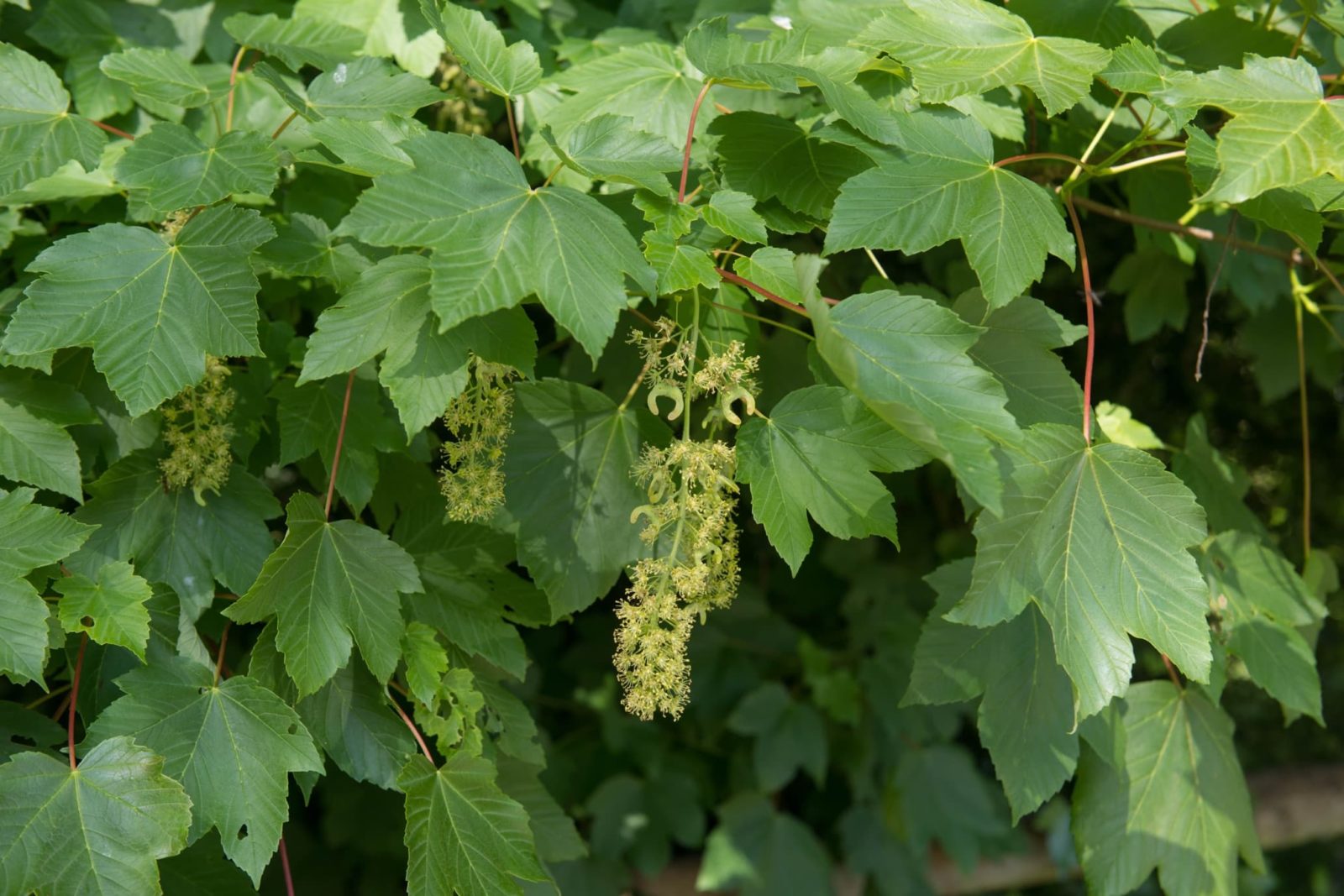
Reviewed By COLIN SKELLY

Colin is a Horticulturist and Horticultural Consultant with experience in a range of practical and managerial roles across heritage, commercial and public horticulture. He holds the Royal Horticultural Society’s Master of Horticulture award and has a particular interest in horticultural ecology and naturalistic planting for habitat and climate resilience.
IN THIS GUIDE
Graceful when young and sturdy when old, the sycamore has an inverted-conical, domed or broadly rounded crown of lush dark green foliage.
The sycamore tree is often selected for planting in suburban parks and city boulevards for shade and landscaping purposes.
This tough species can also withstand both strong winds near cliffs and sea spray by the coast, making great windbreaks when in leaf.
Pasture or forest, city or country, cliff or coast, sycamores are unfussy and will readily grow vigorously anywhere and everywhere, including your garden.
Overview
| Botanical Name | Acer pseudoplatanus |
| Common Name(s) | Sycamore / Great Maple / Harewood |
| Plant Type | Perennial tree |
| Native Area | Central / Southeastern Europe |
| Hardiness Rating | H7 |
| Foliage | Deciduous |
| Flowers | Visually insignificant, pendent, lime-green, catkin-like, nectar-rich panicles |
| When To Sow | August to September |
| When To Plant | April to May |
| When To Prune | January to February |
Sunlight
Preferred
Full Sun
Exposure
Any
Size
Height
15 – 40M
Spread
8 – 30M
Bloom Time
April to May
Soil
Preferred
Most fertile soils
Moisture
Moist but well-drained
pH
Any
The sycamore originates in a swath of land from central to southeastern Europe.1Acer pseudoplatanus. (n.d.). Kew Royal Botanic Gardens. Retrieved March 27, 2023, from https://powo.science.kew.org/taxon/urn:lsid:ipni.org:names:781462-1#distributions
Many centuries back, it became naturalised in the British Isles without ever really being considered invasive.2Sycamore (Acer pseudoplatanus). (n.d.-b). Woodland Trust. Retrieved March 27, 2023, from https://www.woodlandtrust.org.uk/trees-woods-and-wildlife/british-trees/a-z-of-british-trees/sycamore/
Another name for this tree is the ‘Great Maple’, which reflects its enormous size when fully mature.
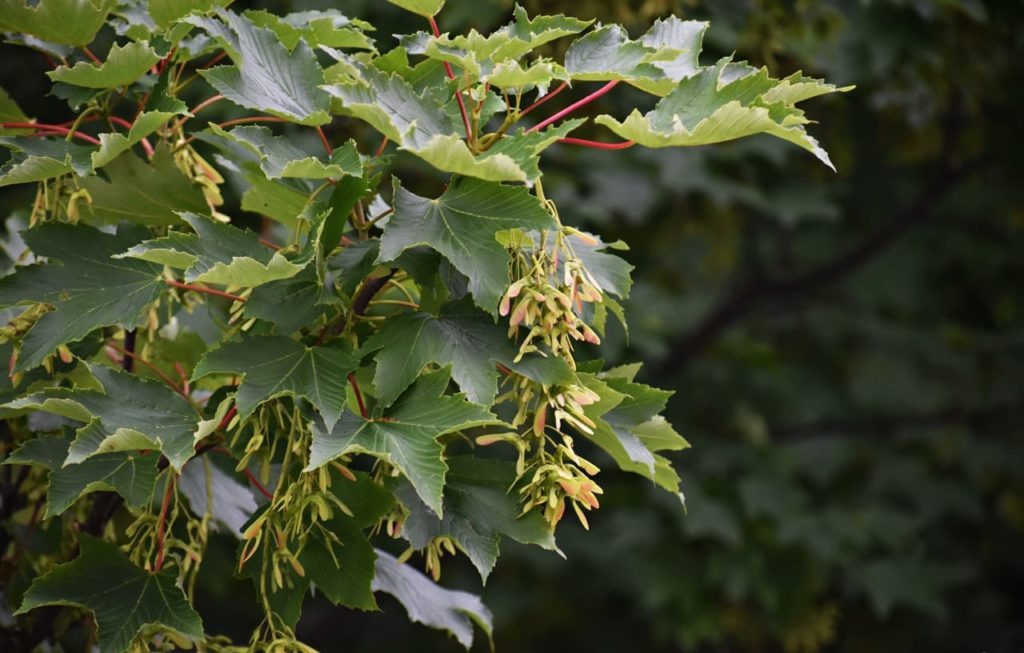
In fact, these trees can reach over 30m in the wild, with some even hitting 40m.
Their canopies have spreads of around 30m, whilst their branches often measure 1m across and can exceed 1.5m.
“I have found Sycamore to be a very wind-tolerant tree, often forming a low, dense dome in very windy spots,” shares Horticultural Consultant Colin Skelly.
“If you have a smaller garden, it can be managed through periodic pollarding or coppicing.”
How To Grow A Sycamore Tree
Sycamores are commonly and inexpensively grown from seed.
An equally common but more costly option, though one that is easier to grow, is to purchase a bare-root or a potted sapling from a nursery specialising in trees.
The advantage of the latter is that you can select a particular cultivar, such as ‘Leopoldii’ for its delightful variegated foliage or ‘Prinz Handjéry’ for its very manageable and compact size.
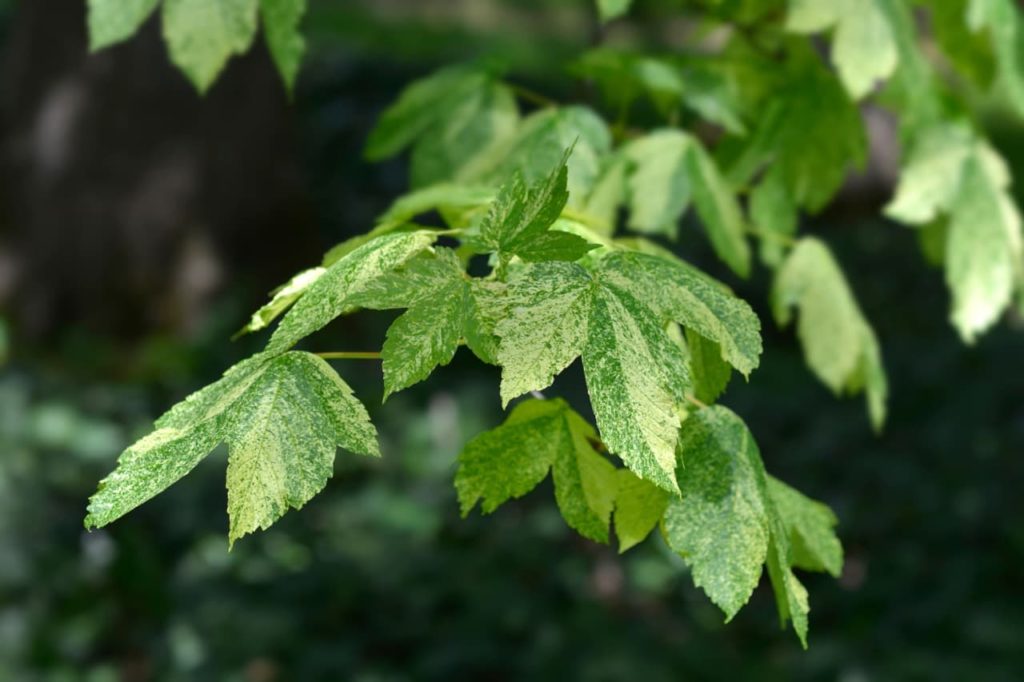
Sycamore seeds can be collected from the ground under an existing tree in autumn.
As a species that self-seeds so readily, grows in inhospitable places and has colonised new territories, sycamores can be easy to grow.
That admitted, if you optimise the growing conditions, not only do you increase the chances of germination, you are more likely to develop a healthy, strong and even tree.
Note that these trees’ shallow, spreading and strong roots may disturb the ground by pushing up pavers or causing a path to become uneven.
They can also tap into a cistern or septic system; you should choose your planting spot with these possibilities in mind.
Planting Guidelines
Seeds can be sown directly into the open ground in autumn or started in pots in spring.
The former method is the quick and careless one that you well may attempt for any old sycamore seeds you have collected.
The latter is the stricter method that is preferable for planting the seeds of special cultivars.
To promote germination for spring sowing, soak the seeds overnight or for up to 24 hours in tepid water.

Prepare clay pots with potting mix or seed-starter mix.
Sow seeds by placing them on the soil and lightly covering them with the growing medium to about 1cm.
Keep the pots in full sun and keep them moist.
When the seedlings have 6-8 true leaves, transplant them into the open ground in the right kind of soil.
Dig a hole 2-3 times as big as the width and the depth of the pot, then dampen the ground.
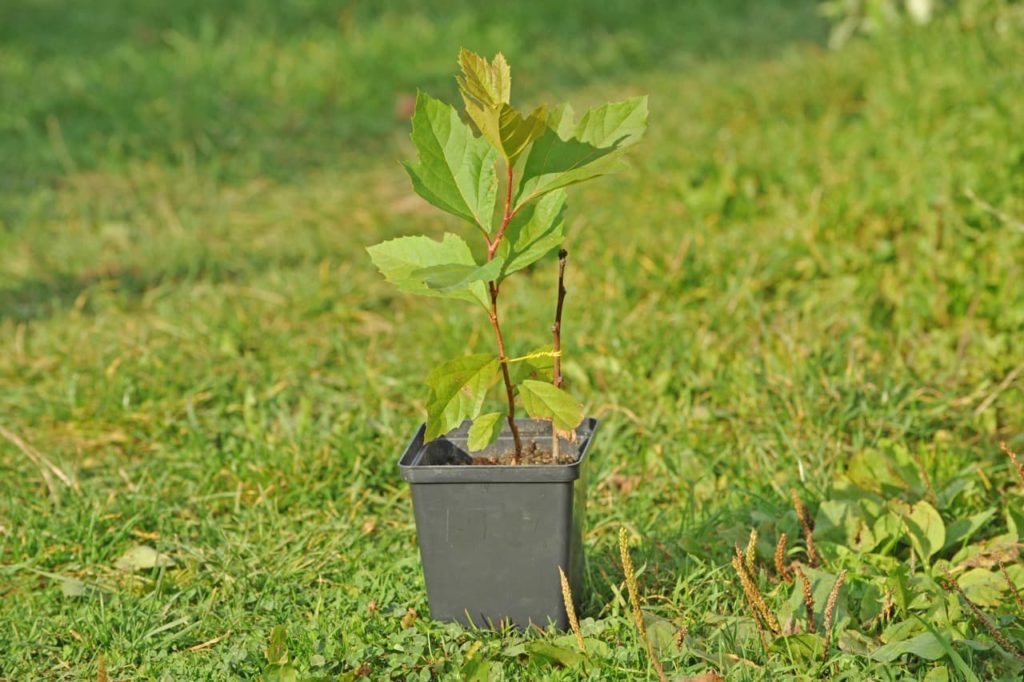
Before you remove the sapling from the pot, be sure that you know where the soil line is.
If you need to, mark it on the incipient trunk.
Gently remove the sapling from the pot, placing it in the hole as you spread out the roots.
Examine it to make sure that its soil line is set to the surface of the ground.
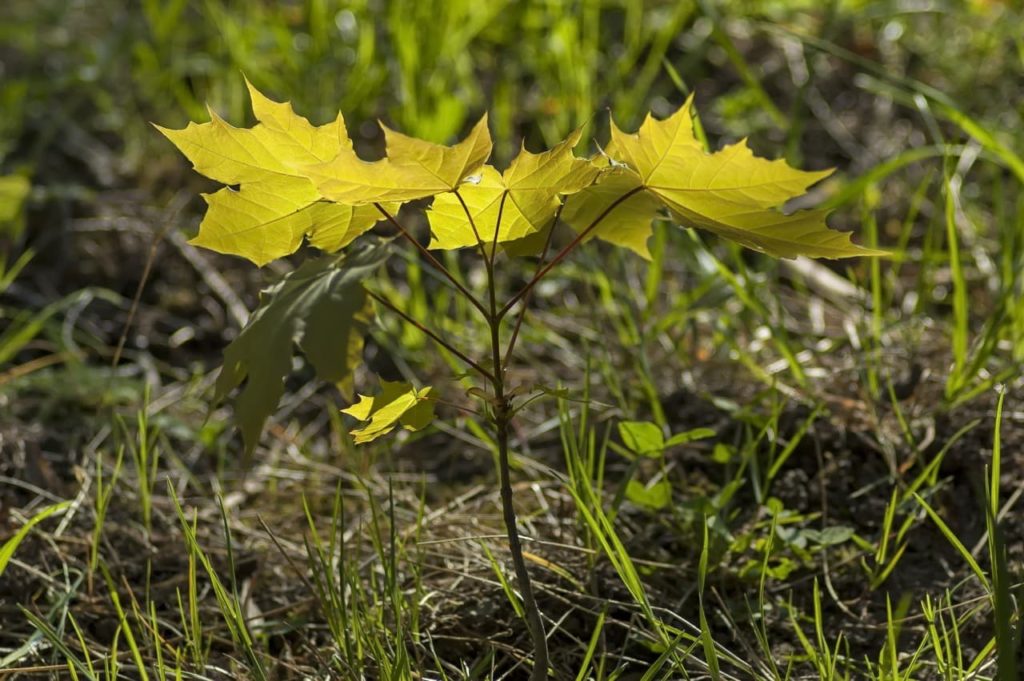
Backfill the hole, tamping down the soil to eliminate air pockets, watering lightly as you do so.
Try to ensure that the sapling is perfectly straight as you backfill.
Fill up the hole so that the soil level is not any higher than what it was in the pot and pack in the soil.
Water the transplanted sapling.
How To Care For Sycamore Saplings
Just like any other sapling, a sycamore sapling will require initial care.
After that, except for watering under unusual circumstances, a sycamore tree does not need any care, as such.
Saplings and young trees should be watered regularly.
Do not allow the soil to dry out and stay dry for more than a couple of days.
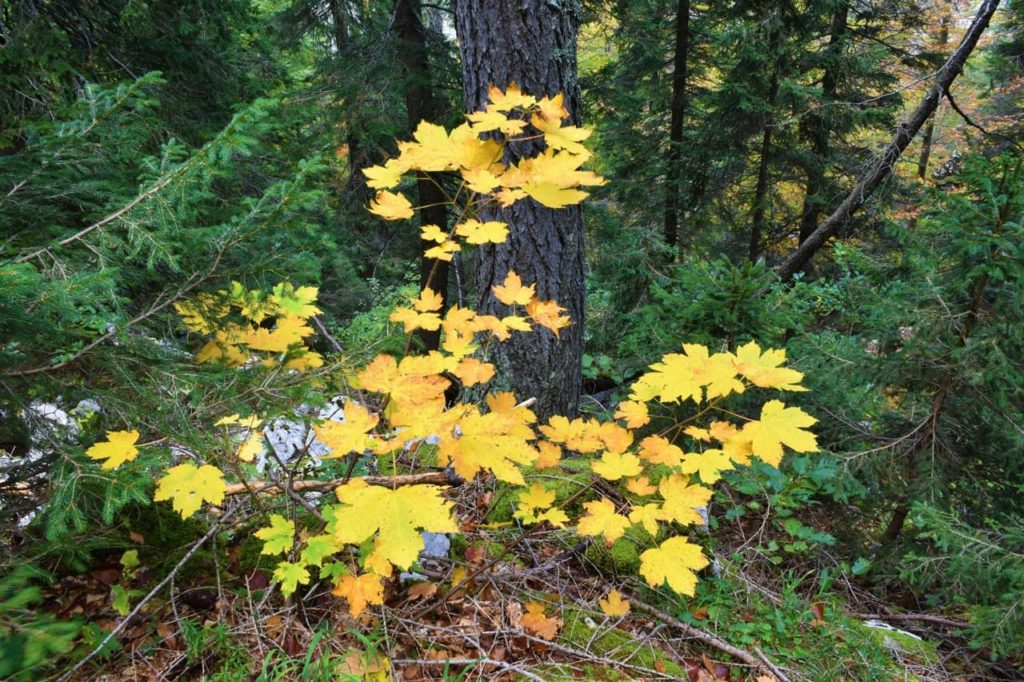
If you see any sign of the sapling or young tree developing a lean, stake it.
If you have planted it in a spot where adverse conditions, such as loose soil or sloping grounds exist, you may wish to pre-emptively stake it.
Ongoing Sycamore Care
Feeding
During the sapling and young tree stages, apply a bone fertiliser once in spring.
Sprinkle it sparingly well away from the root crown, then work and water it in.
After the tree has matured and is 6 or more years old, you may feed it annually in spring with a balanced formula.
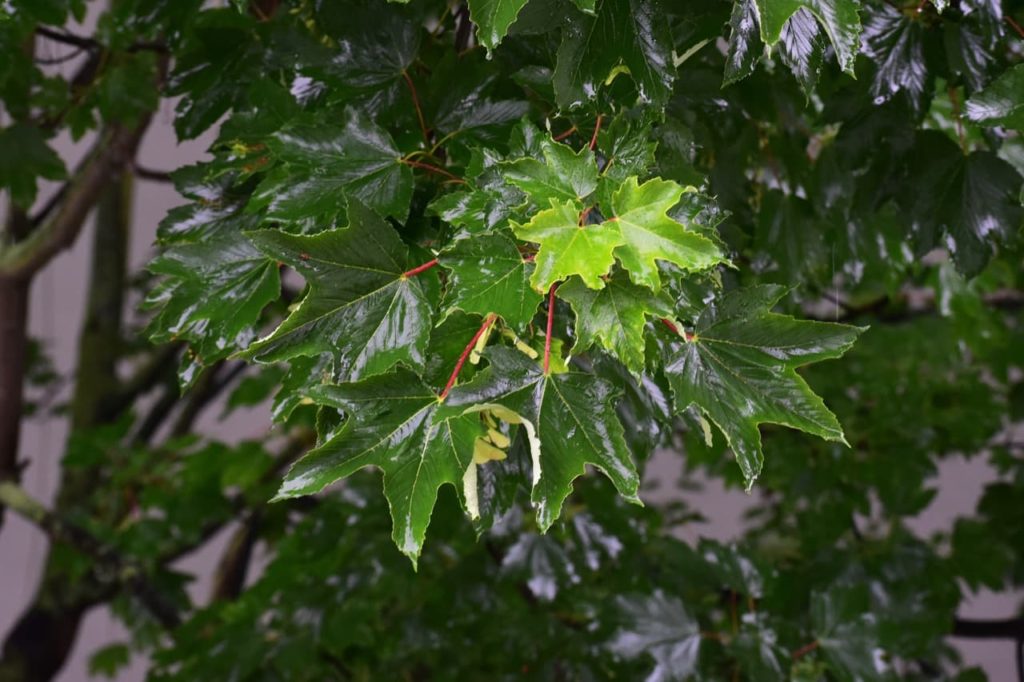
In spring you can mulch the tree to conserve moisture.
An organic mulch made of bark and wood chips would be a good choice.
Leave a ring of open ground around the trunk with its width being proportional to the width of the trunk.
Light Requirements
A sycamore sapling should preferably be planted in a position in full sun or in partial shade.
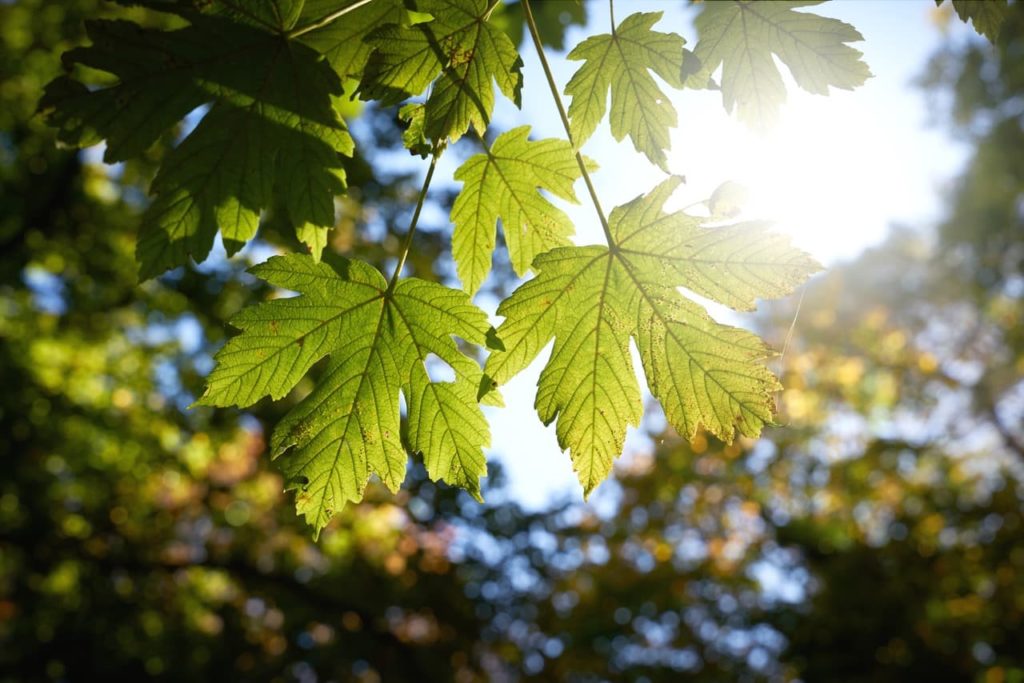
Ultimately, it is the sycamore tree itself that will shield you from the hot sun during the dog days of August.
Soil
Sycamores do not have very specific soil requirements and will grow in most types of soil in the UK.
That said, what is best for the tree is fairly fertile soil that is preferably well-drained and mostly moist.
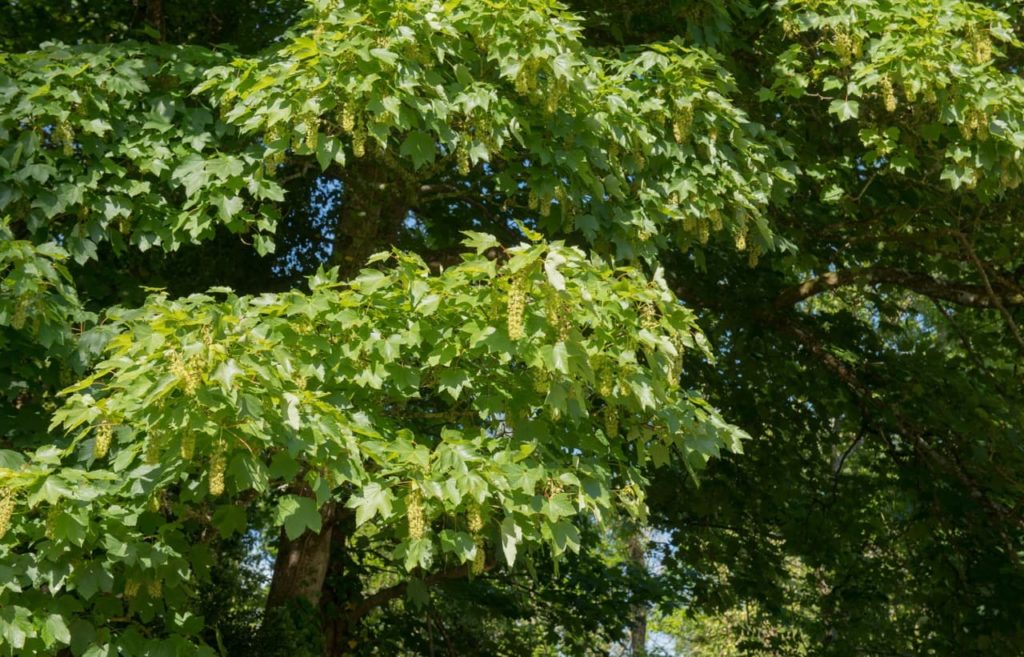
These trees will grow well in a fairly wide range of soil pH levels.
Watering
Fully grown sycamores have shallow but spreading and strong roots.
During normal seasonal weather, they do not need watering, as rainwater and subsoil water will suffice.
However, there is nothing wrong with dropping the hosepipe by the tree and turning on the faucet every now and then.
In unusual circumstances, such as scorching summers or prolonged drought, watering is necessary.
In such circumstances, drench the ground 1-2 times a week.
The ornamental cultivars, especially the smaller ones, should be watered weekly.
Pruning
Sycamores do not require pruning.
All that you need to do is to prune crossing branches and any branch that may be growing at an incorrect angle.
For young trees, you may use an anvil lopper or a pruning saw.
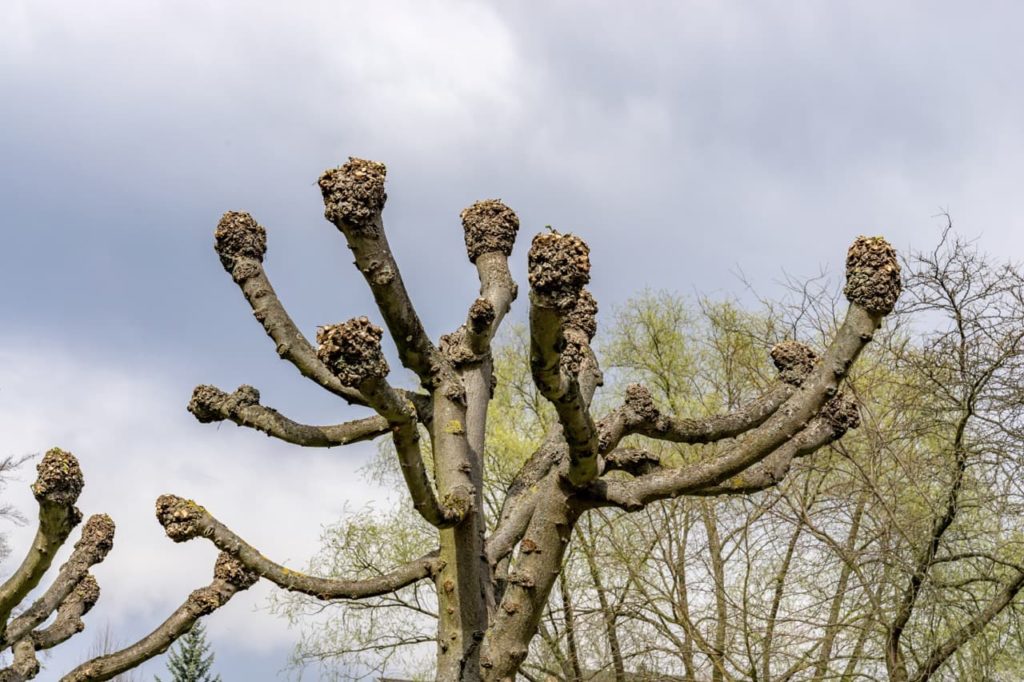
Pruning may also be done to keep the tree to a manageable size in a garden – this is typically done by pollarding it.
Pruning should be done during dormancy, in January or February.
Propagating
Sycamores propagate themselves through those amusing helicopter-like seeds that rotate as they float through the air.
Propagation by seed is by far the most straightforward way to get more of these plants.
Besides seeds, sycamores can also be propagated by two other methods, though neither is as easy or as reliable as using seeds.
The first method is by softwood cuttings taken in late spring or early summer.
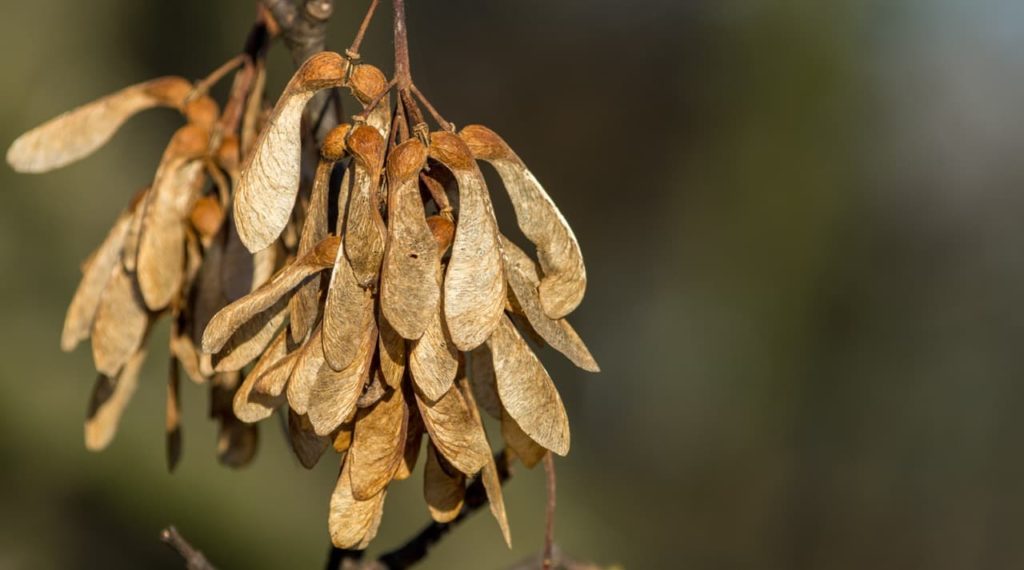
It is difficult to obtain softwood cuttings from a full-grown sycamore and they do not root very readily.
Conversely, it is easier to obtain them from a very young tree and they also root with a relatively higher rate of success.
The second method is by air layering in spring or autumn, which is a very technical and somewhat complicated method.
If you intend to propagate by air layering a stem from a full-grown tree, this will be difficult but can be a reliable method of propagating this tree and offers a very high rate of success.
Common Problems
Aphids and gall mites are the most common problems that sycamores face, but neither is particularly destructive.
Aphids are almost a natural consequence of sycamores because of their floral nectar.
A host of methods to control or eliminate these pests are available.
Another problem in the nuisance category is caterpillars, specifically winter moth caterpillars.
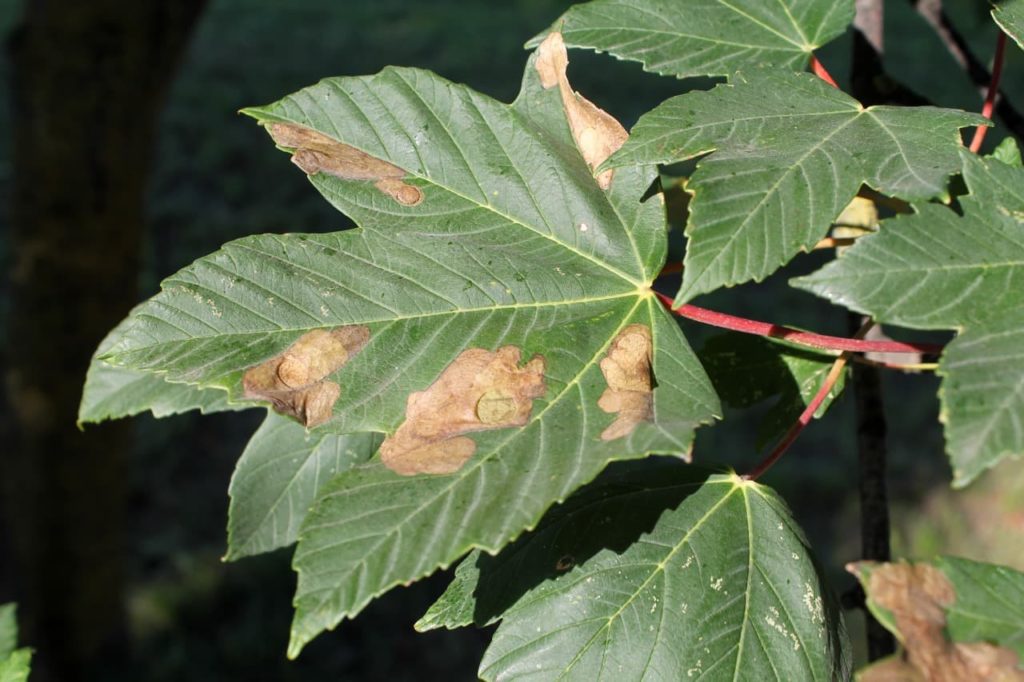
On mature trees, this pest is usually ignored, but on saplings and young trees, it would be a good idea to control them using biological methods.
Scale insects, particularly horse chestnut scale, are probably the most damaging pests that can attack sycamores, as they suck sap and cause minor deformities.
A serious infestation would weaken the tree.
To tackle scale, start early with biological controls and if that does not help, move on to pesticides.
Sooty bark disease is a very serious disease that sometimes strikes sycamores that cannot be controlled by amateur gardeners.
If this fungal disease is not successfully treated by a professional it can kill the tree.
FAQs
How Long Do Sycamores Live?
A lifespan of 200-plus years is quite normal and a good many specimens have lived to 300 years.
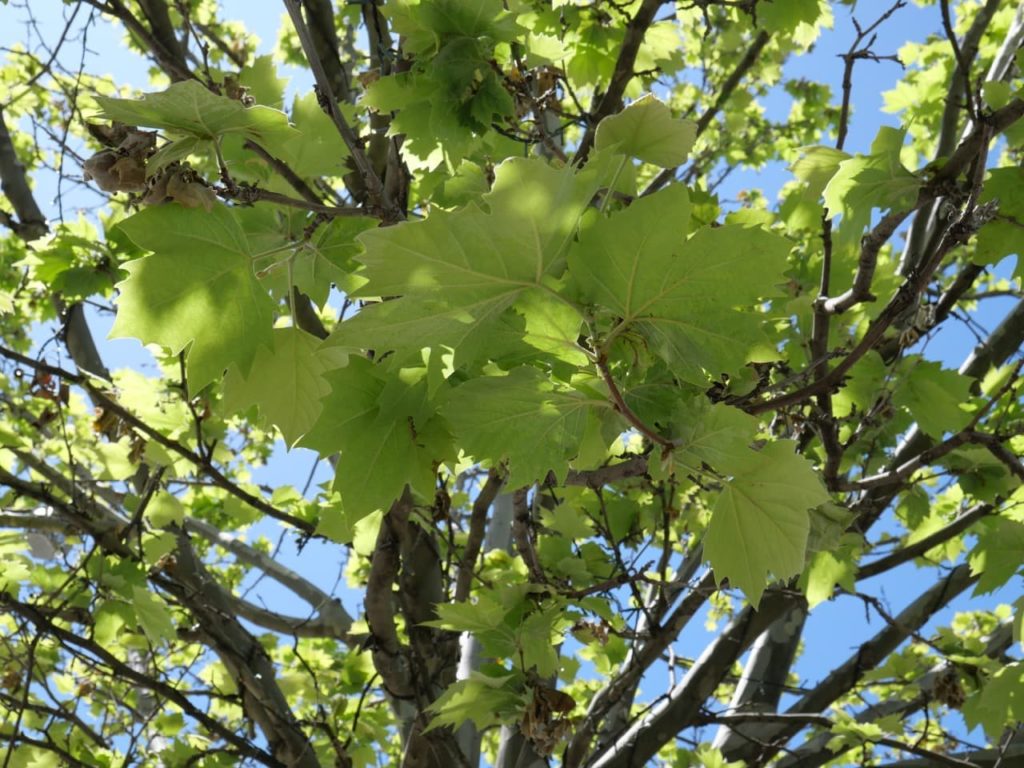
They can live for even 400 years or more.3Sycamore. (n.d.). Heart of England Forest. Retrieved April 13, 2023, from https://heartofenglandforest.org/sycamore
Are These Trees Fast-Growing Or Invasive?
The species tree is definitely very fast growing, whilst oddly enough, a few cultivars, such as ‘Esk Sunset’, are very slow growing!
Though they are sometimes considered a weed and gradually colonise tracts of land, they are not considered or classified as invasive in the UK.
Are They Suitable For Growing In Pots?
The species tree is most unsuitable for growing in pots.
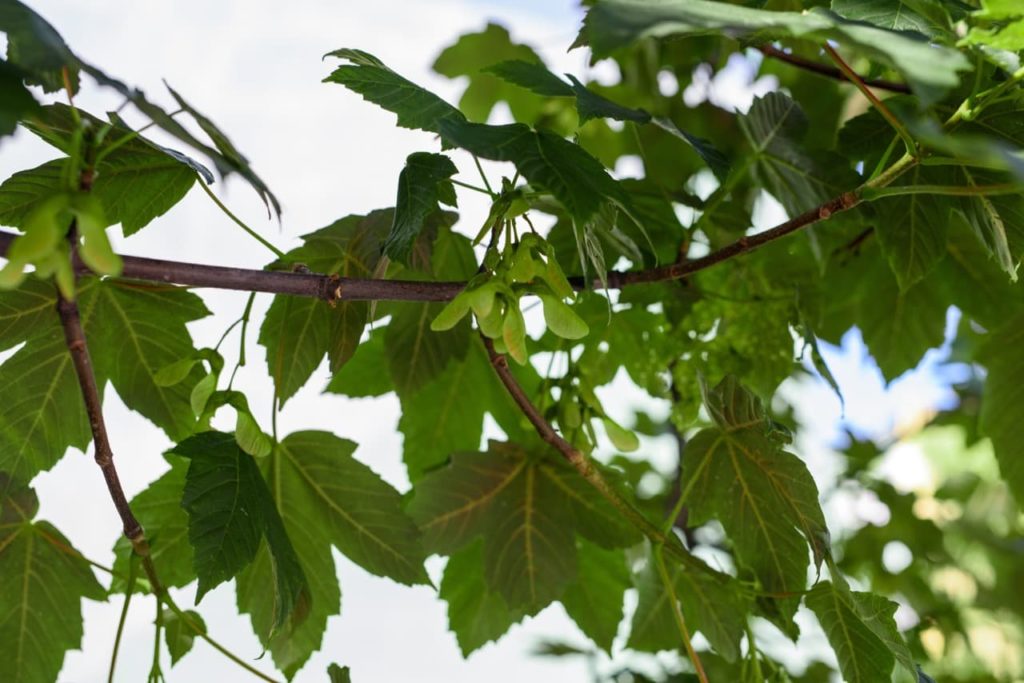
However, the more diminutive cultivars, such as the aforementioned ‘Esk Sunset’, can be grown in large containers, though container-growing cannot really be called suitable for any sycamore.
Can You Pollard A Sycamore Tree?
Yes.
It is not uncommon to pollard species of sycamores in gardens, parks and other urban areas, for size and decorative effect.
Smaller cultivars should not be pollarded, at least not by lay gardeners.
References
- 1Acer pseudoplatanus. (n.d.). Kew Royal Botanic Gardens. Retrieved March 27, 2023, from https://powo.science.kew.org/taxon/urn:lsid:ipni.org:names:781462-1#distributions
- 2Sycamore (Acer pseudoplatanus). (n.d.-b). Woodland Trust. Retrieved March 27, 2023, from https://www.woodlandtrust.org.uk/trees-woods-and-wildlife/british-trees/a-z-of-british-trees/sycamore/
- 3Sycamore. (n.d.). Heart of England Forest. Retrieved April 13, 2023, from https://heartofenglandforest.org/sycamore

